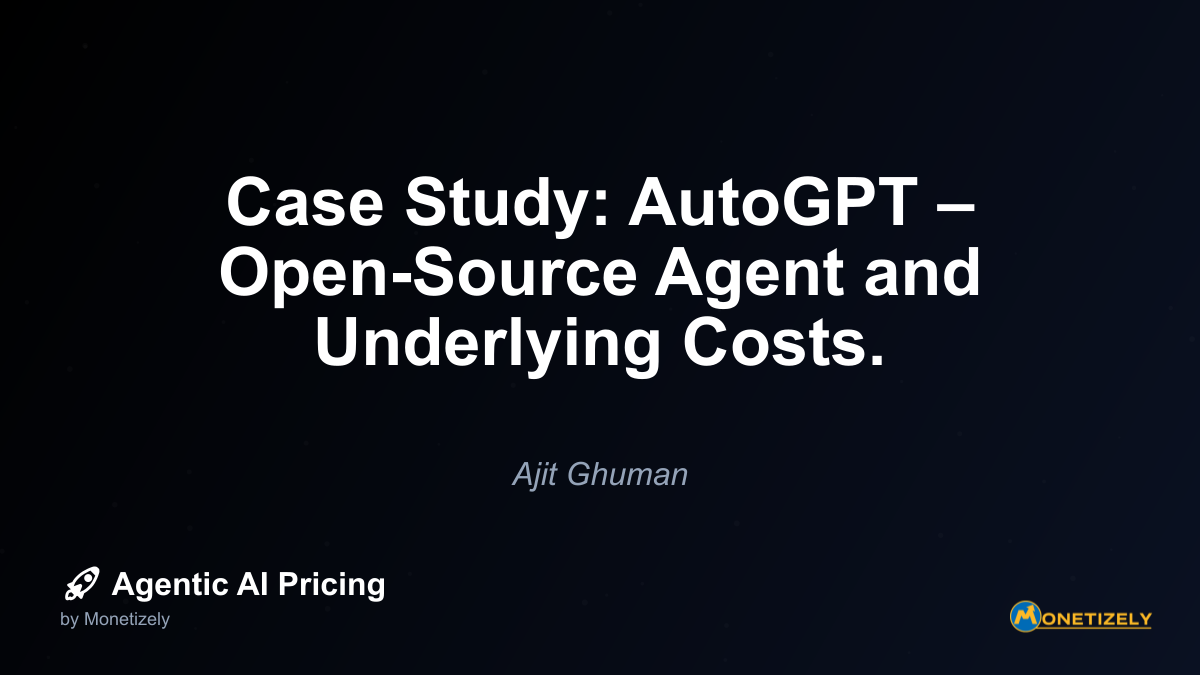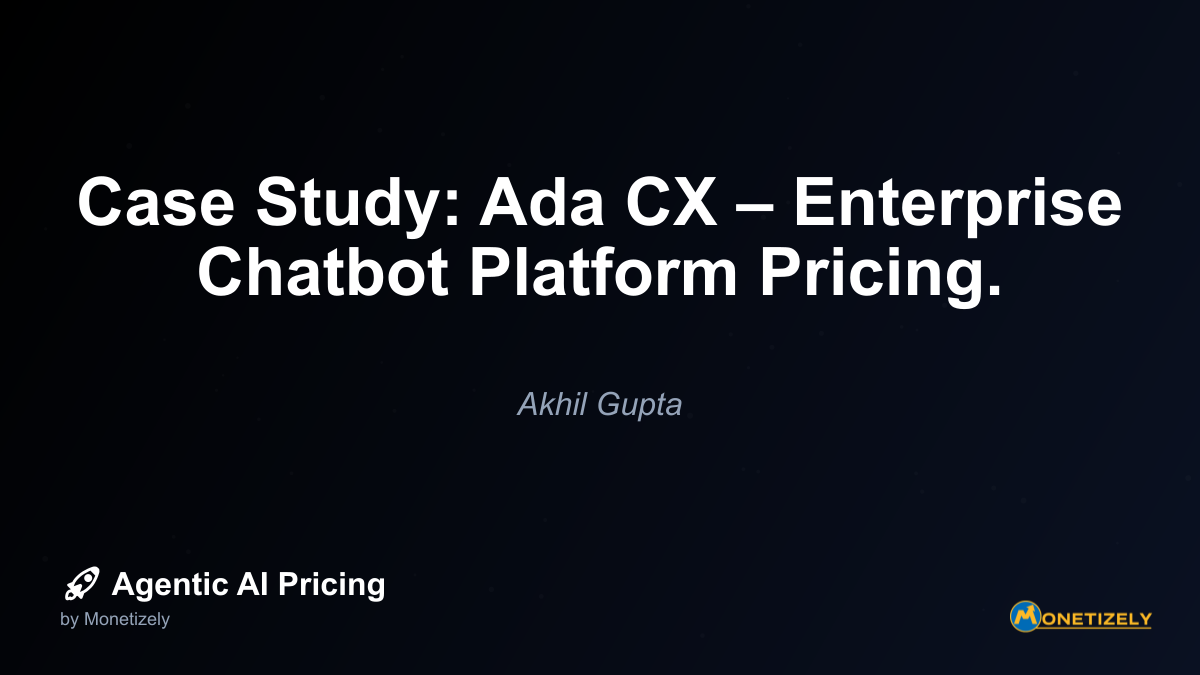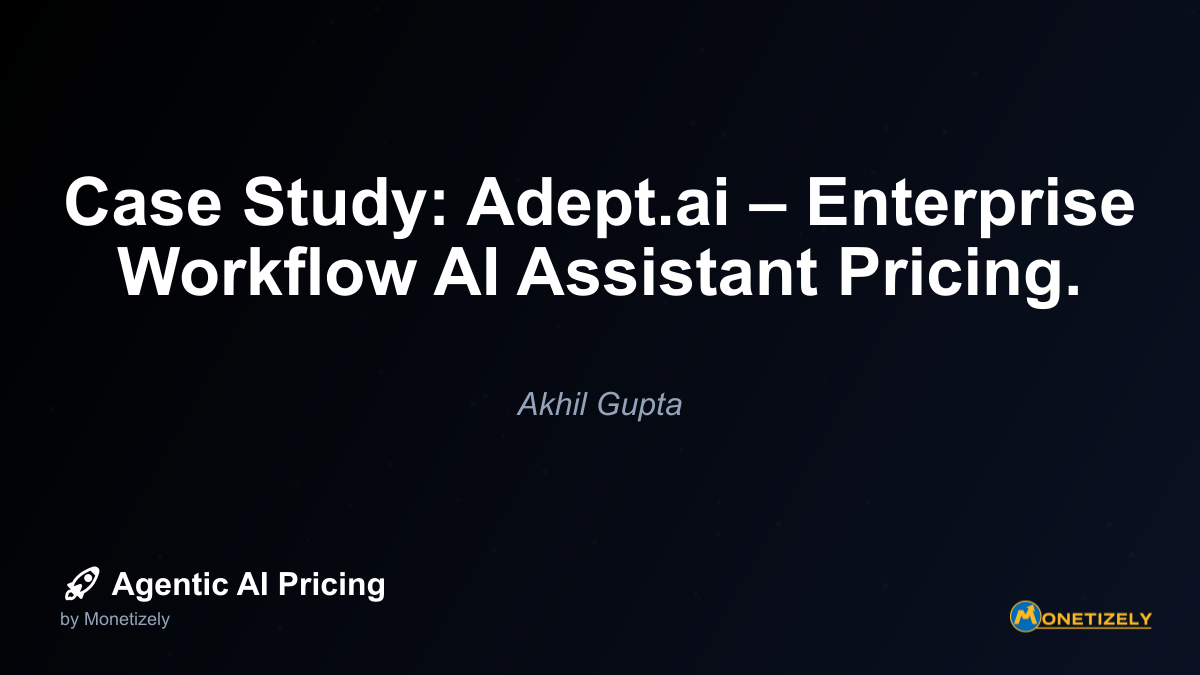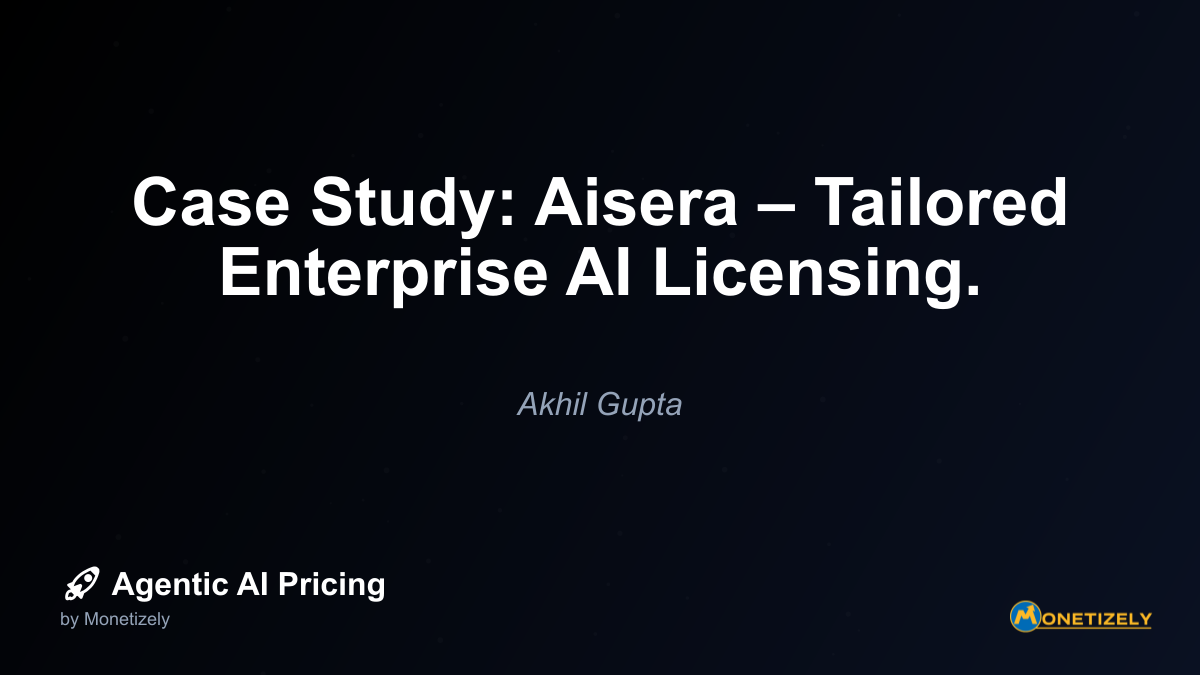· Ajit Ghuman · Case Studies · 6 min read
Case Study: AutoGPT – Open-Source Agent and Underlying Costs.
AI and SaaS Pricing Masterclass
Learn the art of strategic pricing directly from industry experts. Our comprehensive course provides frameworks and methodologies for optimizing your pricing strategy in the evolving AI landscape. Earn a professional certification that can be imported directly to your LinkedIn profile.

Pricing Implications from the AutoGPT Case Study
The AutoGPT case offers several valuable insights for businesses developing or implementing agentic AI systems:
1. Consumption-Based Pricing Works at Scale
OpenAI’s token-based pricing model demonstrates how consumption-based pricing can effectively monetize foundation models. By charging per token rather than per task, OpenAI captures value proportional to the computational resources used. For businesses developing similar infrastructure, this model provides predictable revenue that scales with usage intensity.
For a deeper exploration of API-based pricing approaches, see our analysis of how API-based and platform-based AI agent pricing models differ.
2. Open-Source Can Drive Commercial Revenue
The AutoGPT case demonstrates that open-source software and commercial interests aren’t necessarily at odds. By making the agent implementation freely available, the creators accelerated adoption and innovation, which indirectly generated revenue for the underlying infrastructure provider. This symbiotic relationship between open-source tools and commercial APIs creates a sustainable ecosystem where both can thrive.
3. Value Capture Points May Shift
In traditional software, value is typically captured at the application layer. In the agentic AI ecosystem, value capture often shifts toward the foundation model layer. Companies must carefully consider where in the stack they want to position themselves and how they’ll capture value in an ecosystem where different components may be monetized differently.
4. User Awareness of Costs Affects Behavior
AutoGPT users quickly became aware of the cost implications of running autonomous agents. This awareness shaped usage patterns, with users becoming more selective about which tasks they delegated to the agent. For businesses implementing agentic AI solutions, transparent pricing helps users make informed decisions about when and how to leverage autonomous capabilities.
5. Pricing Structure Influences Agent Design
The token-based pricing model influenced how developers designed and optimized AutoGPT. Techniques to reduce token usage, such as more efficient prompting strategies and better memory management, became priorities. This demonstrates how pricing models can directly shape technical development priorities and optimization efforts.
Lessons for Different Stakeholders
The AutoGPT case offers specific lessons for different participants in the agentic AI ecosystem:
For Foundation Model Providers
API Accessibility Drives Ecosystem Growth: By making powerful models accessible via API, OpenAI enabled an explosion of innovation in the agent space, which in turn drove API consumption.
Pricing Transparency Matters: Clear, predictable pricing allows developers to build sustainable applications and manage costs effectively.
Supporting Developer Innovation: Providing resources, documentation, and support for developers building on your API can create a virtuous cycle of innovation and consumption.
For Agent Developers
Cost-Efficiency as a Feature: In an environment where API costs directly impact users, making your agent more efficient with tokens becomes a competitive advantage.
Monetization Options: While AutoGPT remained free, developers of similar tools could consider various monetization approaches, such as premium features, hosting services, or enterprise support.
Balancing Autonomy and Cost: Designing agents with user-configurable parameters for controlling the trade-off between thoroughness and cost allows users to manage their expenses.
For End Users and Enterprises
Total Cost Calculation: When evaluating agentic AI tools, consider not just the upfront cost of the tool itself but the ongoing API consumption costs.
Cost Controls and Monitoring: Implementing systems to monitor and control API usage becomes important for managing expenses, especially in enterprise settings.
Value Assessment: Developing frameworks to assess which tasks deliver sufficient value to justify delegation to autonomous agents versus human handling.
The Evolution Beyond AutoGPT
While AutoGPT represented an early implementation of autonomous agents, the ecosystem has evolved rapidly since its introduction:
1. More Efficient Agents
Newer agent architectures have improved efficiency, reducing token usage while maintaining or improving capabilities. These optimizations directly translate to cost savings for users.
2. Local Models
The rise of locally-runnable models like Llama 2, Mistral, and others has created alternatives that eliminate ongoing API costs, though often with reduced capabilities compared to the most advanced API models.
3. Hybrid Approaches
Many current implementations use hybrid approaches, combining local models for routine tasks with API calls to more powerful models when needed, optimizing the cost-capability tradeoff.
4. Specialized Agents
Rather than general-purpose agents like AutoGPT, many developers now focus on specialized agents designed for specific domains or tasks, which can be optimized for both performance and cost-efficiency in their particular niche.
Implementing AutoGPT-Inspired Pricing Strategies
For businesses looking to apply lessons from the AutoGPT case study to their own agentic AI pricing strategies, consider the following approaches:
1. Layered Pricing Models
Create pricing structures that separate the tool/platform layer from the consumption layer, allowing users to understand and manage both aspects independently.
2. Cost Transparency Tools
Provide users with dashboards and analytics to monitor their API consumption and associated costs, helping them optimize usage and prevent unexpected expenses.
3. Cost-Capping Options
Offer mechanisms for users to set maximum spending limits, ensuring that autonomous agents don’t unexpectedly generate excessive charges.
4. Efficiency Optimizations as Premium Features
Consider offering enhanced efficiency features (like better memory management or more efficient prompting) as premium features that ultimately save users money on API costs.
5. Bundle API Credits
For commercial agent platforms, consider bundling API credits with your subscription tiers, simplifying the cost structure for users while potentially negotiating volume discounts with API providers.
Conclusion: The Future of Open Agent Ecosystems
The AutoGPT case study illustrates a fundamental dynamic in the emerging agentic AI landscape: innovation and value creation can happen at multiple layers of the stack, with different monetization models operating simultaneously. This multi-layered ecosystem creates opportunities for both open-source innovation and commercial success.
As agentic AI continues to evolve, we’re likely to see increasingly sophisticated economic models emerge that balance openness with sustainability. The most successful approaches will likely be those that create alignment between the interests of foundation model providers, agent developers, and end users.
For businesses navigating this landscape, understanding the full economic picture – including where and how value is captured throughout the stack – is essential for developing effective pricing strategies. Whether you’re building foundation models, creating agent frameworks, or developing end-user applications, the lessons from AutoGPT’s unique approach to balancing open innovation with consumption-based revenue generation offer valuable guidance.
The future of agentic AI will likely continue this pattern of layered innovation and monetization, with each layer of the stack finding appropriate ways to capture value while enabling the ecosystem as a whole to thrive. By understanding these dynamics, businesses can position themselves strategically within this evolving landscape and develop pricing models that drive both adoption and sustainable revenue.
Co-Founder & CEO
Ajit is the author of Price To Scale, a top book on SaaS Pricing and is the Founder of Monetizely. Ajit has led and worked in pricing and product marketing at firms like Twilio, Narvar and Medallia. His work has been featured in Forbes and VentureBeat. Ajit regularly consults with software companies from Seed stage to post-IPO on pricing strategy. Ajit is also a highly-rated co-instructor for 'The Art of SaaS Pricing and Monetization' on Maven.
Pricing Strategy Audit
Let our experts analyze your current pricing strategy and identify opportunities for improvement. Our data-driven assessment will help you unlock untapped revenue potential and optimize your AI pricing approach.




